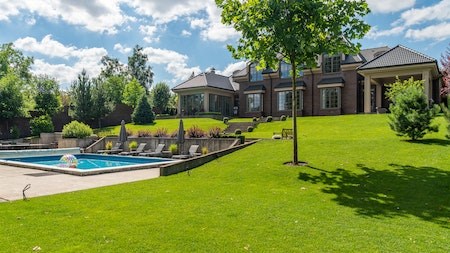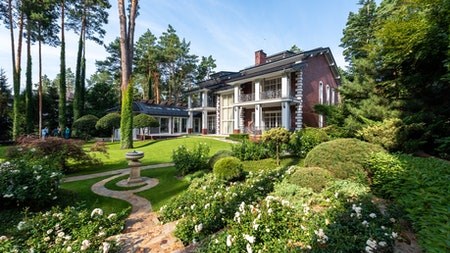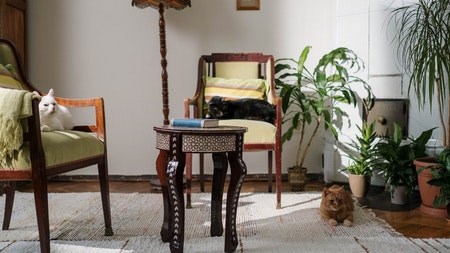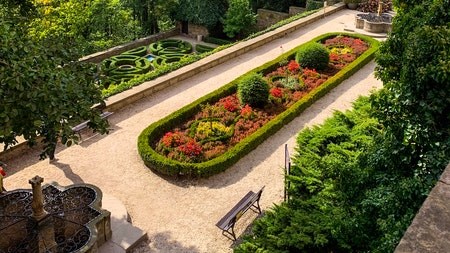Although it is possible to achieve an instant garden in record time, if you are new to gardening and plants, realistically you can only achieve this with the help of a professional landscaper. If you can afford one, this is the way to go. But for most new homeowners on a tight budget, DIY is the only option.
With a bit of patience and planning, you can design a beautiful garden yourself and can have a lot of fun doing it.
Budget
Your first step should be to set a realistic budget for your project.
Soil, plants, equipment and hard landscaping materials are pricey, so before you buy anything - or start designing your garden – visit some local garden centres to get some idea of prices.
Take photos of the equipment you will need and write down the prices. Also, note the names - including the botanical names - and the prices of plants you like and think might be suitable for your garden.
Once your garden is planted, your most significant expense will be irrigation. For the first few seasons, your plants will have to be watered regularly while establishing themselves, so you need to budget for this, too. As far as possible, select water-wise plants and group them according to their watering needs.
Online
In addition to visiting garden centres and chatting with knowledgeable friends and family, one of the best ways of starting your first garden project is to look online. There you will find all the inspiration and knowledge you need to create a magical outdoor space.You can start by checking Private Property garding tip section.
Which other sources are available?
Gardening in South Africa has a vast plant library with essential information on a wide range of plants as well as detailed information on landscape design, gardening in different soil types, climates and a host of other gardening topics.
Life is a Garden is the marketing division of The South African Nursery Association (SANA), an organisation that promotes gardening as a hobby for all South Africans.
Lifestyle offers guidelines for ensuring your garden looks good throughout the year.
Starke Ayres has growing guides for all types of plants, from microgreens and sprouts to mushrooms, all kinds of trees, shrubs and flowers.
Stodels has detailed information on all aspects of gardening and a garden club with monthly newsletters.
Plantland has an online garden shop that supplies everything you could possibly need for your garden, in addition to expert advice.
The handy articles on these sites will provide all the information needed for your landscaping project. Take the time to browse the sites for plant inspiration and make a list of the plants you like and which you believe may be suitable for your garden and climate. Then visit your local garden centres for further advice. Most reputable nurseries will know which plants do best in your area.
Plan
Once you have a budget, start thinking about how you want to use the area.
- Spend time outdoors visualising what should go where and take note of shade and sun areas. Watch the sun’s movement and where the sunny and shady areas are in your garden. This may change with the seasons or if you are removing some existing trees or large shrubs.
- Pay attention to fixed elements like slopes, wind and rain. For, example you don’t want your braai area in a windy corner of the garden.
- Watch how the water flows in your garden when it rains and note any drainage issues. After all, you don’t want a temporary dam in your flower bed.
- Decide which existing plants you wish to keep and which need to go.
- Do some rough sketches of your garden, dividing the space into different areas with labels showing the intended use. Take into account practical needs such as screening the view of the neighbour's yard, where you want pathways and new flowerbeds, a patio or a children’s play area.
- Mark where you want trees and shrubs, pathways and water features to ensure you keep a comfortable balance between hard and soft landscaping elements of your design. Keep in mind that trees and large shrubs may be difficult to remove at a later stage, so you need to be sure of their placing before you plant them.
- Proportion is an important part of garden design. For example, an outsize tree can overwhelm a small garden and make it dark and gloomy, whereas too many small flower beds and plants will look silly in a large garden.
- Plants vary in shape and growth patterns, so when selecting your plants keep in mind the size and shapes they will eventually grow into, as well as the texture, shape and colour of their leaves and flowers.
- As focal points, consider plants with attractive shapes or striking leaves, as well as hard landscaping elements such as pots, statues, bird baths, gazebos and pergolas.
Be patient
Don’t rush the design of your garden. Instead, relax and enjoy learning about your favourite plants. Visit as many as your local garden centres as possible and take notes and photographs of the plants you love and think are suitable.
Resist the urge to start buying until your plan is complete. Rather, go home and do further online research to double-check that the plants you like really are suitable for your garden and climate.
Like most DIY projects you undertake to save money, landscaping your entire garden won’t be finished in a day. Depending on your budget and the time available to you, it may take several years to complete. With patience and careful planning, though, a beautifully landscaped garden is well within reach of most homeowners.
Writer : Sarah-Jane Meyer




